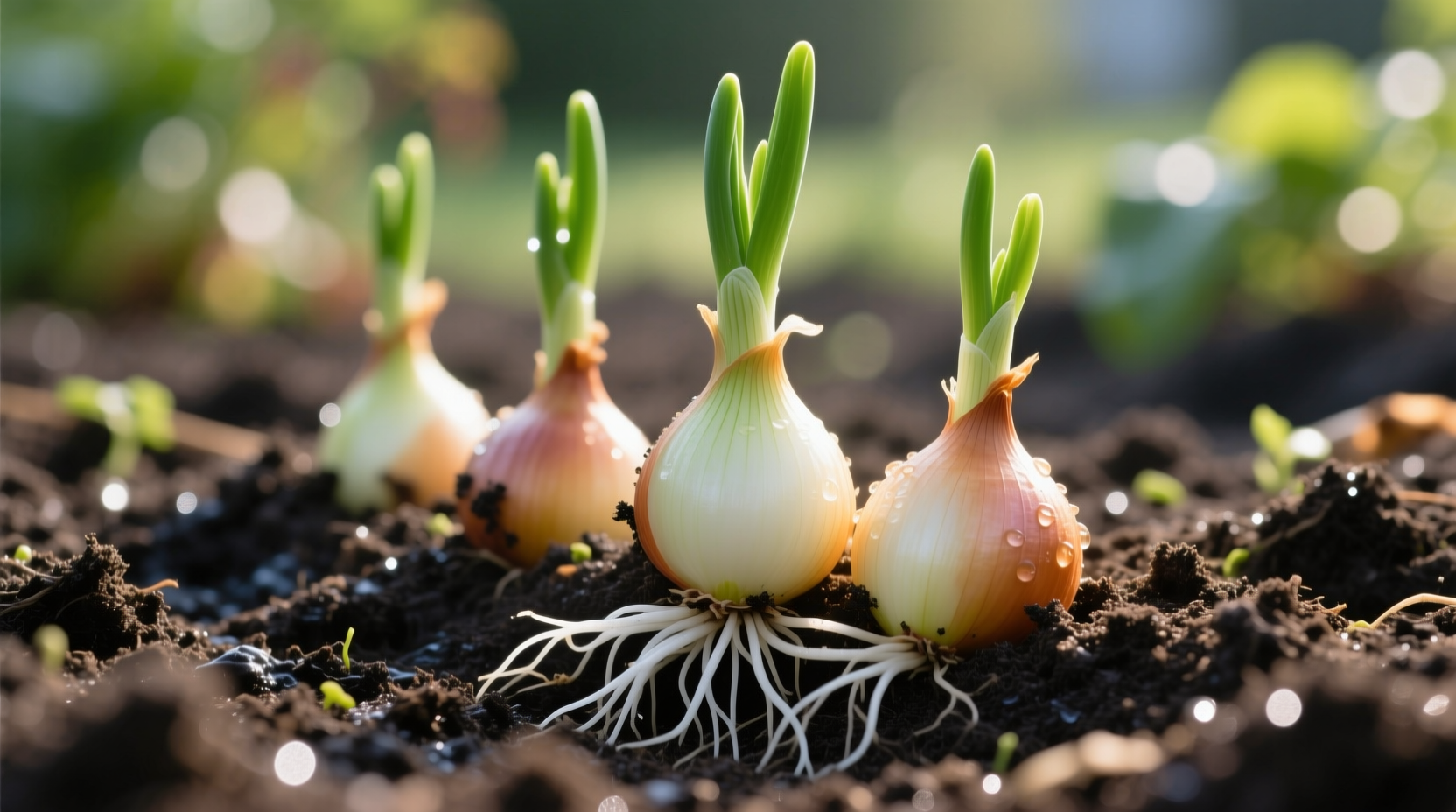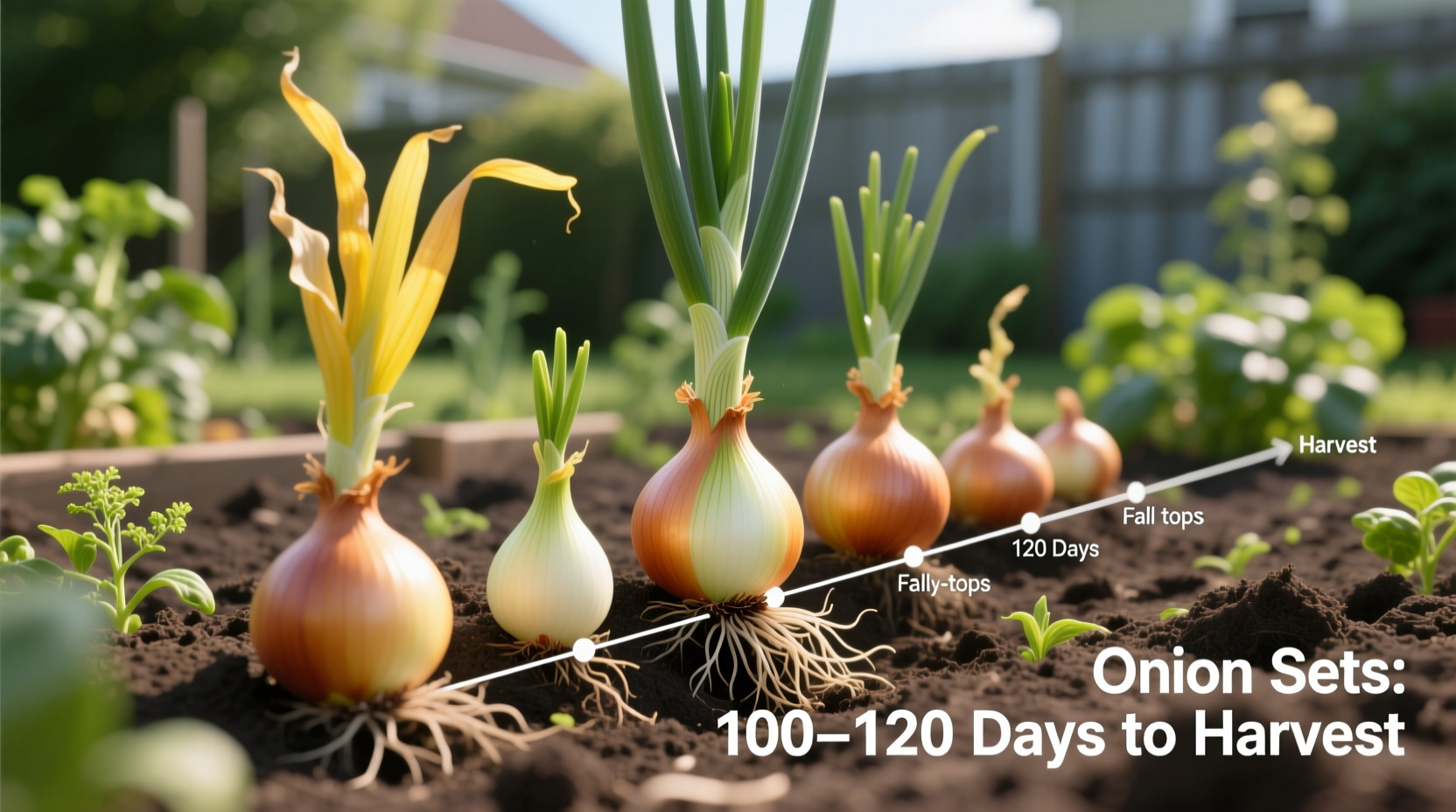Discover exactly how long onion sets take to grow and learn proven techniques to optimize your harvest. This guide delivers science-backed timelines, growth stage indicators, and regional adjustments so you can plan your garden with confidence. Whether you're growing sweet Vidalias or pungent storage onions, you'll gain actionable insights to maximize your yield.
Why Onion Sets Are the Smart Choice for Home Gardeners
Onion sets—small pre-grown bulbs—offer a significant time advantage over other planting methods. Unlike seeds that require 100-170 days to mature, sets jumpstart the growing process by bypassing the delicate germination phase. University agricultural extensions consistently report that sets reduce total growing time by 30-40% compared to direct seeding.
"Sets give home gardeners a critical head start," explains Dr. Linda Chalker-Scott, horticulture specialist at Washington State University Extension. "They're particularly valuable in regions with short growing seasons where waiting for seeds to germinate could mean missing the harvest window entirely."

Complete Onion Set Growth Timeline
Understanding the precise developmental stages helps you anticipate harvest times and identify potential problems. Here's what happens at each phase:
| Growth Stage | Time After Planting | Key Visual Indicators | Care Requirements |
|---|---|---|---|
| Root Development | 0-14 days | White roots emerging from base | Keep soil moist but not soggy |
| Leaf Growth | 2-4 weeks | 3-5 green shoots reaching 4-6 inches | Apply balanced fertilizer |
| Bulb Initiation | 4-6 weeks | Lower leaves yellowing, bulb swelling | Reduce watering, stop fertilizing |
| Maturation | 8-12 weeks | Toppling foliage, papery outer skin | Cease watering 1 week before harvest |
4 Factors That Significantly Impact Your Onion Growth Time
While the standard timeline provides a baseline, these variables can accelerate or delay your harvest:
1. Day Length Requirements
Onions are categorized as short-day (10-12 hours light), intermediate-day (12-14 hours), or long-day (14+ hours) varieties. Planting the wrong type for your latitude can delay bulb formation by 2-3 weeks. The USDA Agricultural Research Service confirms that mismatched day-length varieties may never properly bulb in certain regions.
2. Soil Temperature Conditions
Optimal root development occurs between 60-75°F (15-24°C). According to Cornell University's Vegetable Growing Guide, sets planted in soil below 50°F (10°C) experience significantly slowed growth—adding 10-15 days to maturity. Using black plastic mulch can raise soil temperatures by 5-10°F, accelerating growth by 7-10 days.
3. Variety Selection Matters
Different onion types have distinct maturation periods:
- Green onions (scallions): Ready in 20-30 days
- Sweet onions (Vidalia, Walla Walla): 75-90 days
- Storage onions (Yellow, Red): 90-110 days
4. Regional Climate Adjustments
Gardeners in USDA Hardiness Zones 3-5 should plant sets 4-6 weeks before last frost for optimal results, while Zones 6-10 can plant in fall for winter harvest. The University of California Cooperative Extension notes that in warmer climates, planting too early can cause premature bolting, adding 2-3 weeks to the growing period while waiting for the plant to recover.
Step-by-Step Guide to Maximizing Your Onion Set Growth
Follow these research-backed practices to achieve the fastest possible harvest:
- Prepare soil 2 weeks pre-planting: Amend with 3 inches of compost to a depth of 12 inches. Onion sets thrive in loose, well-drained soil with pH 6.0-6.8.
- Plant at proper depth: Set bulbs 1-2 inches deep with pointed end up, spacing 2-4 inches apart. Deeper planting delays emergence by 5-7 days.
- Water strategically: Maintain consistent moisture (1 inch/week) until bulb formation, then gradually reduce to prevent rot.
- Fertilize correctly: Apply nitrogen-rich fertilizer every 2-3 weeks until bulbs begin forming, then switch to phosphorus-potassium formula.
- Monitor for bolting: If flower stalks appear, remove them immediately to redirect energy to bulb development.
Troubleshooting Common Growth Delays
When your onion sets aren't progressing as expected, these solutions can get them back on track:
- Slow emergence (beyond 14 days): Check soil temperature—cold soil is the most common culprit. Apply black plastic mulch to warm the soil.
- Yellowing leaves: Could indicate nitrogen deficiency. Apply balanced liquid fertilizer and check for pests.
- Small bulbs despite healthy tops: Likely overcrowding. Thin plants to 4-inch spacing to allow bulb expansion.
- Premature bolting: Caused by temperature fluctuations. Harvest immediately as bulb development stops once flowering begins.
Harvesting at the Perfect Time
Timing your harvest correctly ensures maximum storage life and flavor development. Watch for these critical indicators:
- Green onions: Harvest when stems reach 6-8 inches tall (20-30 days)
- Spring onions: Pull when bulbs are 1-2 inches wide with green tops (45-60 days)
- Storage onions: Harvest when 50% of tops have fallen over naturally (60-90 days)
Proper curing extends storage life dramatically. The National Onion Association recommends curing harvested bulbs in a warm, dry, well-ventilated area for 2-3 weeks until necks are completely dry and outer skins are papery.











 浙公网安备
33010002000092号
浙公网安备
33010002000092号 浙B2-20120091-4
浙B2-20120091-4